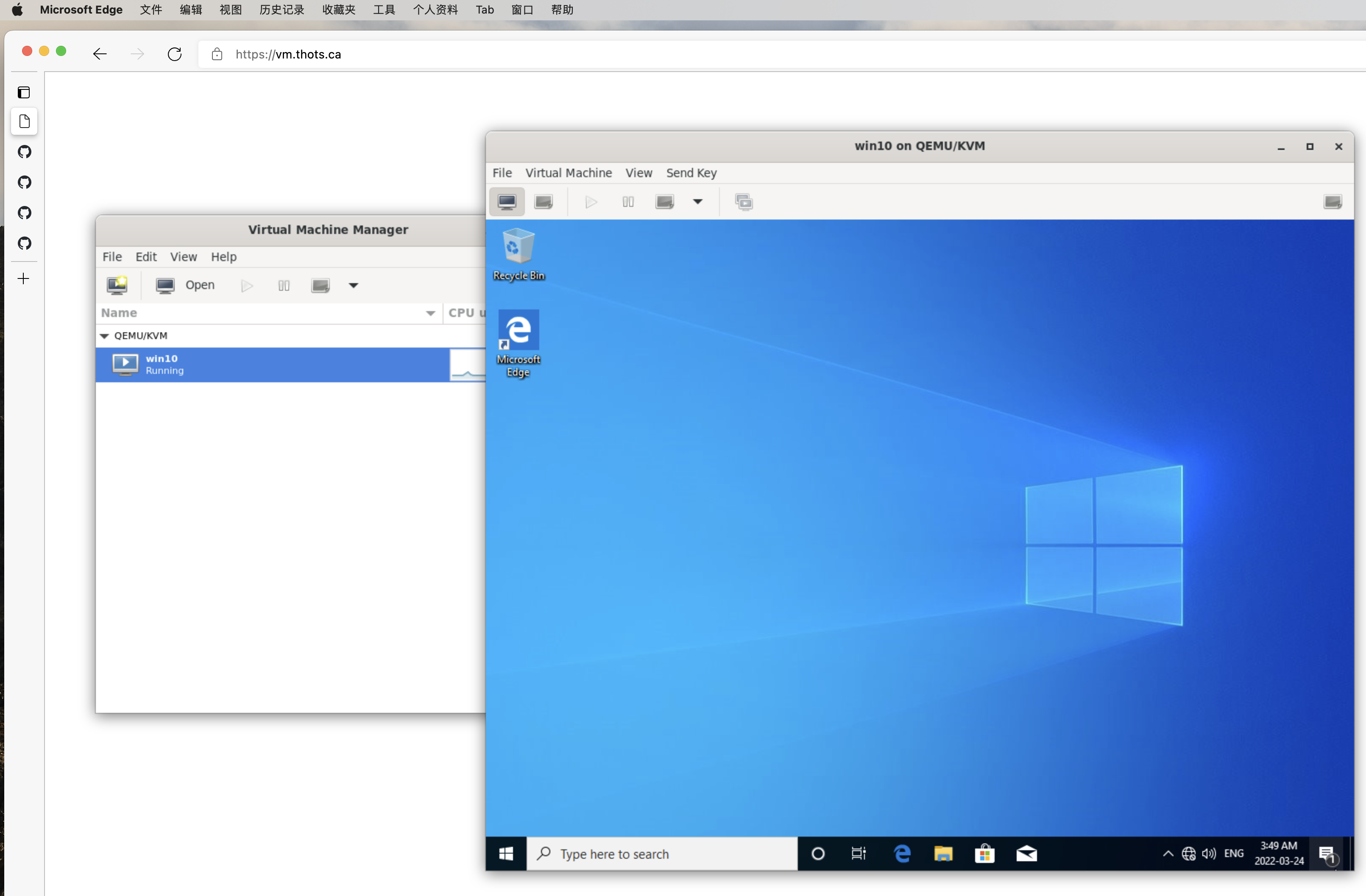https://github.com/ms-jpq/windows-in-docker-old
WHY? So you can run Windows "as a container"
https://github.com/ms-jpq/windows-in-docker-old
docker kvm windows
Last synced: 3 months ago
JSON representation
WHY? So you can run Windows "as a container"
- Host: GitHub
- URL: https://github.com/ms-jpq/windows-in-docker-old
- Owner: ms-jpq
- Archived: true
- Created: 2020-06-02T08:28:07.000Z (about 5 years ago)
- Default Branch: gates
- Last Pushed: 2022-03-24T04:33:39.000Z (over 3 years ago)
- Last Synced: 2024-11-03T23:35:02.529Z (8 months ago)
- Topics: docker, kvm, windows
- Language: Shell
- Homepage:
- Size: 1.32 MB
- Stars: 51
- Watchers: 7
- Forks: 9
- Open Issues: 3
-
Metadata Files:
- Readme: README.md
Awesome Lists containing this project
README
# Much better project here
[https://github.com/ms-jpq/windows-in-docker](https://github.com/ms-jpq/windows-in-docker)

---
# The thingy below is **depreciated**
---
# [WIND - Windows in Docker](https://ms-jpq.github.io/windows-in-docker)
Browser > Docker > KVM > Windows
Thank you Redhat, very legal & very cool.
## WHY?
QEMU + KVM has a relatively involved setup, not very user friendly.
This image is vastly more user friendly, it comes with:
1. Browser UI
2. Networking out of the box
3. Literally copy paste install
4. Built-in Windows drivers
5. Crazy easy customizations, ie. `--cpus=9 --memory=6024 --size=120`
## Preview


## Instructions
### Prerequisites
You hardware must be able to run `KVM`. (Most computer can run at least 1 layer of virtualization now days.)
### Install
Run the command below, and head to Firefox at port 8080 to finish installation
```sh
docker -it --rm \
--privileged \
-v /lib/modules:/lib/modules:ro \
-p 8080:65080 \
-v /vm_image_dir:/config \
-v /iso_dir:/install \
msjpq/kvm-windows new --bios
```
**Add `--bios`, if your windows version is old, or else it will load UEFI**
`` will eject after first poweroff, you will find the generated libvirt manifest under `/config`.
Run the command below to finish installation, and for future usage.
```sh
docker -it --rm \
--privileged \
-v /lib/modules:/lib/modules:ro \
-p 8080:65080 \
-v /vm_image_dir:/config \
msjpq/kvm-windows
```
#### Drivers
You will need to manually install some of drivers, (VirtIO is annoying like that).
##### Essential
1. The harddrive drivers will need to be installed before first reboot.
2. The ethernet drivers will need to be installed after first login under Device Manager.
##### Whatever
Things like `qxl` can also be installed under Device Manager. Not really important though.
**All drivers are included with the default install, under `D:/` or `E:/` drive.**
##### Customization
Additional flags to pass onto `new ...`
| Flag | Default | Option |
| ----------- | -------- | ------------------------------------------------------------------------- |
| `--bios` | `False` | Boot `bios` instead of `uefi` |
| `-os` | `win10` | Windows distro |
| `--cpus` | `#cores` | Number of virtual cpus |
| `--memory` | `4000` | (MB) |
| `--vram` | `256` | (MB) |
| `--size` | `100` | (GB) |
| `--dry-run` | `False` | Dry run |
| `--extra` | `None` | Extra args for [`virt-install`](https://linux.die.net/man/1/virt-install) |
### Networking
All ports from VM are forwarded to container except:
`53`, `67-68`, `65001-65535`
**NOT** recommended to run with `--net=host`.
### Environmental Variables
#### Browser UI
- `-e PATH_PREFIX=/`
- `-e VNC_RESIZE=scale|off`
- `-e RECON_DELAY=250` reconnection delay (ms)
#### Virtualization
Libvirt look for `VM_NAME.xml` to boot.
`new` will create `VM_NAME.xml` and `VM_NAME.img`.
- `-e VM_NAME=wind`
### Ports
- `-p 8080:65080` noVNC web UI
- `-p 5900:65059` VNC
### Volumes
Libvirt manifests are stored in`/config`, along with VM images.
- `-v ./vm_data/:/config`
You need to supply your own `windows.iso`, for obvious reasons.
- `-v ./install_media/:/install`
### Disclaimer
Works on my machine ™.